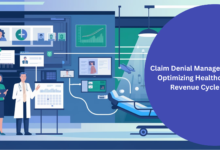Cybersecurity: Web-Based Businesses should Automate Content Security Policy in 2022

The cybersecurity industry has been talking about how important it is to protect the server-side, or back end, of a business for decades. This is to make sure that IT works well and to protect the overall integrity of the business and the data it stores.
But for businesses whose models are based on using websites and webpages that require customer input, it’s now just as important for CSOs and CISOs to keep an eye on the client-facing side of the business and user browsers.
At the most basic level, these executives need to keep their businesses safe from cybercriminals who want to take advantage of client-side vulnerabilities and a traditional content security policy (CSP) that doesn’t have the automation needed to provide proper protection.
Read More: Top 4 Cybersecurity challenges in 2022
Security Protocols
Just as a commercial pilot would never just set a flight path and forget about it, a business website’s security must also be constantly checked for any changes or actions that need to be made. Pilots are constantly getting new passengers who need to be checked out carefully. They have to make sure that the systems are working right, and they have to be taught how to deal with problems that come up out of the blue.
Traffic on a website is the same in that it always has new people using it. Also, changes and improvements are always being made, and the system needs to give IT and development staff an easy way to fix actions that could be dangerous and need to be fixed. In essence, web-based businesses know that, like an airline, they need to keep their passengers safe, keep their engines running, and avoid making a series of mistakes that could cause delays, upset customers, or even worse.
In the same way, a pilot could never manually (much less continuously) keep an eye on all the important parts of an airplane without the help of sensors and computers that are made for that purpose. They do a pre-flight safety check that rarely, if ever, changes. If everything is fine, the plane is ready to go, but only with the knowledge and peace of mind that a highly sophisticated plane is working in the background and alerting pilots of anything that may need their attention.
The Case for Automation
Client-side security for the websites of a large company needs to be automated. Even the server side of a business is protected by cybersecurity solutions of today, which use AI, machine learning, and various automated tasks to keep things safe. Before recently, client-side security didn’t have the same level of new ideas.
The news keeps saying that user information has been stolen, and this is making CSOs and CISOs want to know what needs to change and why. They’re learning that front-end security is all about fixing a big problem: you can’t know what you don’t know if you can’t see what’s going on. Scary, but we can fix it.
It turns out that IT workers tend to think of the content security policy that many web-based businesses use as a generic one-time step that’s just done to give a website some basic security. It’s not that easy, not even close. A CSP can be used as a flexible tool, but it needs to be audited to find out which policies work and which don’t. Even if new plugins are added, etc., it must still work right.
Front-end systems usually use tens of thousands of scripts from third-, fourth-, or even fifth-party sources. Just because of that, you can’t trust them right away. But because there are so many scripts, it makes no sense to think that a person could review or optimize them all effectively or consistently. Instead, there needs to be a system that does it automatically.
Read More: Smart indoor home security cameras to buy in 2021
What a CSP Aims To Uncover
One of the main things a CSP finds are scripts that are not safe. Cybercriminals can use these scripts to carry out POS skimming attacks, which are becoming more common, as well as cross-site scripting (XSS) and JavaScript injection attacks, which are similar but not the same.
Attacks can happen when third-party scripts are changed or when new marketing trackers or plugins are used. CSPs should make it easy to keep track of CSP violations, start fixing problems, and help staff fine-tunes policies. If a script shouldn’t be able to access certain assets and it tries to, red flags appear and attacks can be stopped.
An automated CSP approach can effectively evaluate scripts, data, and what they’re doing before it’s too late. It does this by crawling a website all the time and acting like a real user. Manually managing a large-scale CSP is almost impossible, but an automated approach can make an initial scan, policy creation, emulation testing, policy enforcement, violation reporting, and policy tuning happen in seconds instead of weeks or months.
This makes it much easier to manage and keep an eye on a CSP, which makes security on the client side of a business much stronger. Through tailored CSP creation, day-to-day management, and real-time policy optimization, IT staff not only deal with this growing client-side threat, but they also have more time to help with their core business. They also help to maintain a superior customer experience that focuses on security, which sets their business apart from the competition. It’s another way to make sure that people who visit your website enjoy their “ride.”











